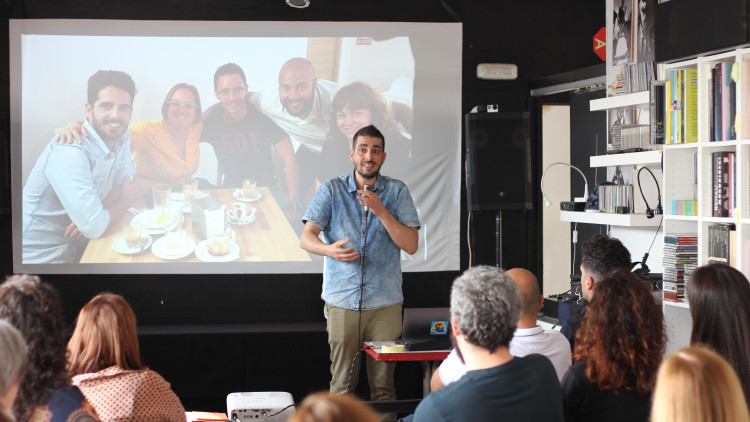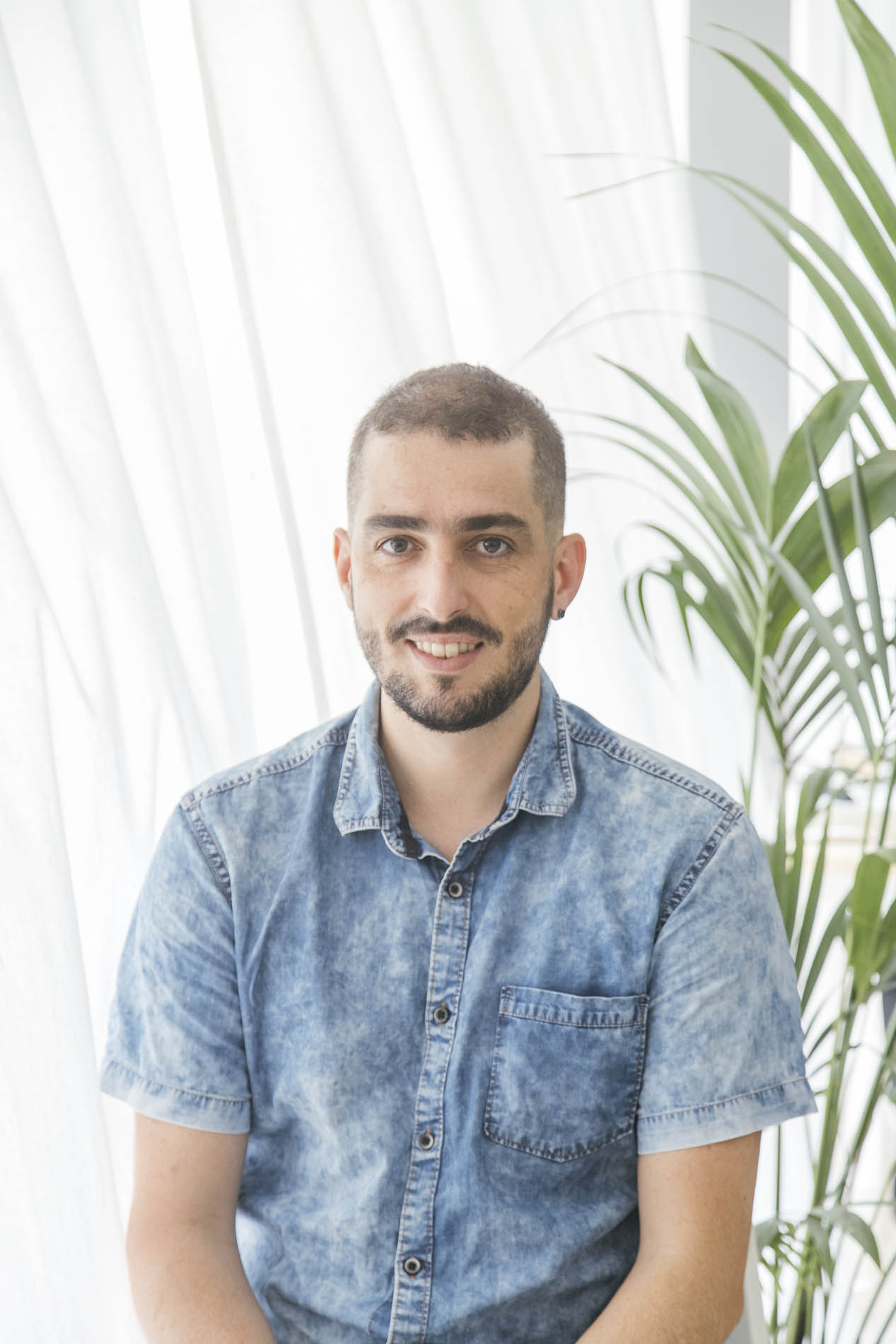"It takes time and listening to understand a complex context"

Interview with our Paediatric ICU mediator, Felipe G. Gil from ZEMOS98
It would be no exaggeration to say that the work of ZEMOS98 mediator Felipe G. Gil is in his blood, that he lives and breathes his commitment to dialogue among social actors with the aim of bringing about transformative change through culture. In this interview, he recounts his journey with his five citizen-commitments at a key moment in the project: when the artist’s arrival on the scene introduces the challenge of managing the delicate balance between desire and reality.
What does cultural management mean to you?
Some years ago we used the term “cultural management” to describe what we did at ZEMOS98. Then at some point we started calling it “creative cultural management,” because management has to do with what goes on behind the scenes to enable a cultural project—in our case a festival—to come into being. And also because there’s a tendency to think that management can’t be imaginative, that there’s no way to organise more creative approaches to management.
More recently we’ve stopped using the term “cultural management” because we’ve moved much closer to social movements and activism. There’s been a constant politicization of the organisation, because of the crisis and because of the inherent nature of what we do. Also, it’s a term that evokes the traditional idea of the cultural sector: it covers certain roles and actors but it was sometimes too narrow for us, precisely because of the work we did as social connectors of actors who are outside it, such as academics and the world of education.
What term have you decided on?
We now use “mediation” as a term that covers what we used to call “cultural management,” and sometimes “cultural mediation”.
“To put it in prosaic terms, ‘cultural mediation’ refers to being in the middle of various kinds of social actors, negotiating the languages and codes of these sometimes disparate universes, so that they can communicate and carry out a project.”
Has the definition of “cultural mediator” changed for you as a result of joining Concomitentes?
We see our work as a collective enterprise. In this case, a mediator is placed at the service of a community—which may or may not have been created for a specific project—, working in a particular social space. One of the lessons I’ve learned from being in contact with social movements and activists is the idea that culture can be a common good that brings about social change. This was something we could sense even in the European or Spain-wide projects we’ve participated in. And even when we go outside the “traditional culture sector”, there is always a similar context. I think the Paediatric ICU is the first time I’m in a project in which we’re working with people whose context is really different from our own, so we’re entering unknown territory. This is also because nursing staff use very technical language, linked to what goes on in hospitals, and there’s a series of hierarchies and work cultures that are different to the ones we are normally part of.
What lessons have you learnt from this experience with the citizen-commissioners?
The main lesson has been leaving that comfort zone and working with people who are unfamiliar with our language, in order to start learning a different language in a context that has a lot to teach us.
Tell us about the mediation work to create a shared set of principles at the Paediatric ICU.
Mediation is about building a common language. I don’t have the sense that we’ve done that yet, but we’re searching: every meeting and conversation is a negotiation and a dialogue on these same issues. There are some things that exist a priori, for example, the unit’s very name—Intensive Care Unit—contains the word “care”, which is very familiar to us. Even so, their approach to care is very different. For them it’s about urgent care, saving lives, and then taking charge of a situation of extreme vulnerability: they deal with children whose lives have been saved and need to understand why they’re in hospital. Our work involving care has always been in less stressful environments, without the pressure of immediacy. On the other hand, the nursing staff already have a relationship with culture, they have to be up to date with the children’s cultural preferences in order to gain their trust. And that means knowing about films, cartoons, and music. They see it as something supplementary to their work, but it’s actually crucial, because when they’re building trust with patients and their families, this cultural knowledge contributes to the process. The ones with children, like Quique, Lili, and Laura, already have this knowledge. But Seve and Ruyman have acquired it as part of their work.

"Cultural content plays an important role in the work of nursing staff, who use it and bring it into play to help them win over their patients. Then there’s what we can contribute from the perspective of cultural mediation.”
What spaces, methodologies, and strategies have you included in this mediation?
I think the core methodology—which is not strictly technical—is listening. I have tried to listen very honestly to what their work is like and what problems they face, and I’ve tried to do it without prejudice. Another tool is empathy. It sounds obvious, but listening is not transformative if it is not accompanied by a serious attempt to put yourself in the other person’s shoes and understand their problems, frustrations, and desires...
That’s some challenge.
It’s not always easy, we all have a history that influences us. For instance, I thought that care in an ICU would reflect the discourse of feminist movements. But I realised that they don’t use the terminology of feminist activism to talk about their work, even though they do put many of the same values in practice. It was only by listening and respecting their position that I came to understand that it wasn’t necessary to question this aspect. Their work can be just as transformative, even if they don’t use the language of the feminist imaginary. And that means making a concession: mediation perhaps has to do with ceding ground in order to get closer. It takes time and listening to understand a complex context.
An obvious example has been the pandemic and the distance imposed as a result. One stage of the mediation, which lasted a year, took place remotely. This was because, firstly, I don’t live in the city where this Paediatric ICU is located. In normal circumstances, we’d make up for this with travel on top of the online meetings we were already using to coordinate the project, because mediation is a combination of online and face-to-face meetings. But secondly, the pandemic forced us to use an exclusively online model, and that has been one of the major challenges. And there’s another, more specific element, which was always there but intensified once the pandemic started, which is the fact that nursing staff sometimes don’t want to talk about what goes on in hospital outside of working hours. This produced a contradiction and the group has been very generous, recounting very difficult and traumatic situations for the sake of the project. We’ll always be very grateful for them for generating an exclusively online space, after all the stress that the pandemic added to their work.
“The work of mediation has also been about not overburdening the team of citizen-commissioners, that is, maintaining regular communication without bombarding the group. Their generosity was greater than any mediation strategy, but above all we’ve tried to take care of the group.”

How do you feel about the artist coming on the scene, and about dealing with the creative process versus the wishes of the commissioning team?
In the early meetings to set up Concomitentes in Spain—drawing on the protocol, the existing experiences in France, and conversations with Anastassia Makridou-Bretonneau, who coordinated the French equivalent for many years—we were told that the result of our work is not a solution to a problem, but rather one answer, among many possible answers, to a question. It’s true that in this case, the nursing staff started by formulating a problem: the fact that they need more tools to deal with the emotional care of paediatric patients. But in the end mediation is also a journey in which we realise that an artist can’t solve a structural problem in a hospital. The emotional care of paediatric patients surely requires a multifactorial approach, with many professional and technological tools, beyond the scope of art. And although we have carried out a co-research process that even resulted in a literature review by child and adolescent psychologist Sara Miguel, we have to be aware of our limitations. We’re doing our best to ensure that the artwork really feeds back into that initial need, but we also have to be honest and accept that a graphic novel, a podcast, or a mobile library will not resolve the problem for good. Rather, they can bring the problem to the forefront, draw attention to its complexity, and even be very useful sometimes. At the same time, we have to recognise the need to respect artistic freedom, so that it doesn’t just become instrumental at the expense of reflection. That doesn’t mean lowering ambitions or not wanting to have a social impact, it just means recognising the scale of the problem. It will be one step towards finding a more comprehensive solution.
